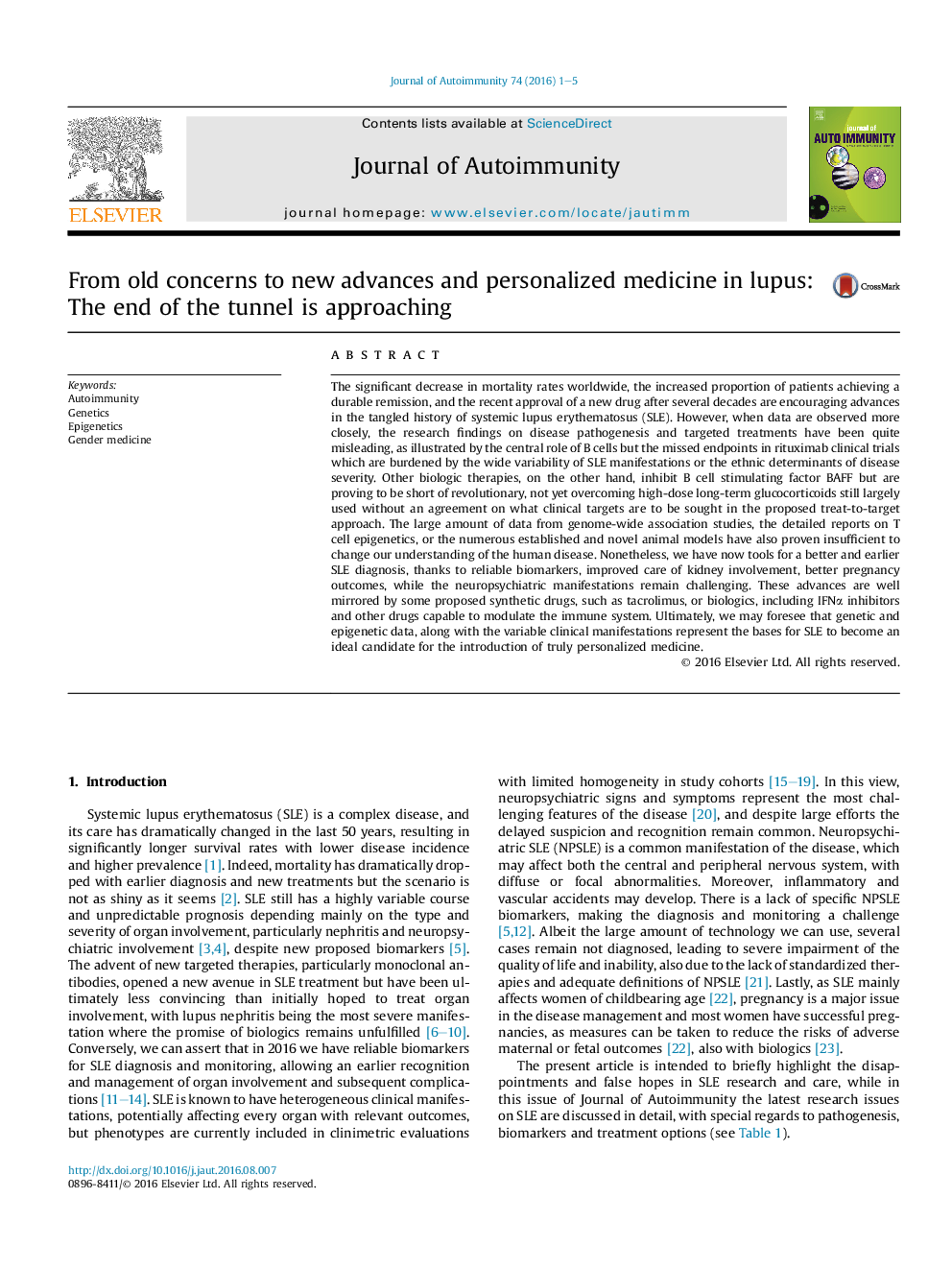| Article ID | Journal | Published Year | Pages | File Type |
|---|---|---|---|---|
| 5667893 | Journal of Autoimmunity | 2016 | 5 Pages |
â¢SLE mortality rates has decreased but disease pathogenesis and targeted treatments remain unconclusive.â¢Among missed opportunities there are the central role of B cells and other biologic therapies.â¢Data from genome-wide association studies, T cell epigenetics, or animal models have also proven insufficient.â¢Nonetheless, there are more sensitive markers for SLE diagnosis.â¢Better pregnancy outcomes characterize women with SLE.
The significant decrease in mortality rates worldwide, the increased proportion of patients achieving a durable remission, and the recent approval of a new drug after several decades are encouraging advances in the tangled history of systemic lupus erythematosus (SLE). However, when data are observed more closely, the research findings on disease pathogenesis and targeted treatments have been quite misleading, as illustrated by the central role of B cells but the missed endpoints in rituximab clinical trials which are burdened by the wide variability of SLE manifestations or the ethnic determinants of disease severity. Other biologic therapies, on the other hand, inhibit B cell stimulating factor BAFF but are proving to be short of revolutionary, not yet overcoming high-dose long-term glucocorticoids still largely used without an agreement on what clinical targets are to be sought in the proposed treat-to-target approach. The large amount of data from genome-wide association studies, the detailed reports on T cell epigenetics, or the numerous established and novel animal models have also proven insufficient to change our understanding of the human disease. Nonetheless, we have now tools for a better and earlier SLE diagnosis, thanks to reliable biomarkers, improved care of kidney involvement, better pregnancy outcomes, while the neuropsychiatric manifestations remain challenging. These advances are well mirrored by some proposed synthetic drugs, such as tacrolimus, or biologics, including IFNα inhibitors and other drugs capable to modulate the immune system. Ultimately, we may foresee that genetic and epigenetic data, along with the variable clinical manifestations represent the bases for SLE to become an ideal candidate for the introduction of truly personalized medicine.
